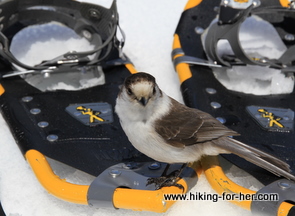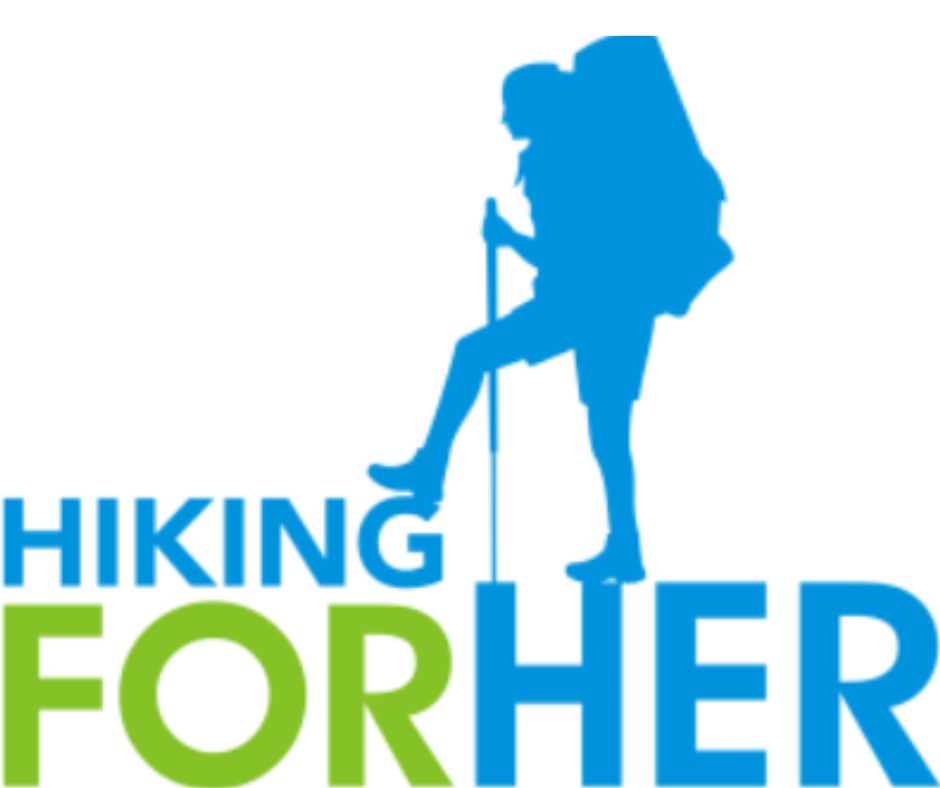Birding for Hikers:
Enjoy Tweets
On The Trail
By Diane Spicer
Birding for hikers: only a small subset of hikers will be interested in this topic.
Which is a shame, because bird behavior is a fascinating glimpse into the terrain you hike through.
Birds can tell you when there's a predator on the prowl - not that you have to be worried that you'll be eaten for lunch, but don't you want to catch a glimpse of the fox/bear/coyote/whatever?
Birds are also fascinating for their communication styles. Some birds whistle, or sing, or use body language to communicate.
Birding for hikers can happen at a rest stop, when you're munching a sandwich and wondering why a little brown bird is hopping from branch to branch in the nearest tree.
Recently, I found a series of recorded lessons on "bird language".
I listen to the lessons while I'm on my daily neighborhood walk.
Then I "practice" translating bird language in my own back yard, and apply what I'm learning on my week end hiking excursions.
If this sounds interesting to you, check out the Wilderness Awareness School in Duvall, WA for its home study offerings on birding for hikers.
Birding for hikers:
bird identification field guides
If it's bird identification you're most interested in, have you seen the book series by Stan Tekiela?
(He has guides for all over the United States.)
Because I'm mostly hiking in the Pacific Northwest, I use his Birds of Washington field guide, and here's why I love it: it's color coded!
- If the bird is mostly gray, go to that section and it's likely that you'll quickly identify it.
- Same for yellow, brown, black and white, etc.
This no-brainer approach quickly satisfies my curiosity because it gives me size, migration, food, and comparison information all on one page.
Take a look! And don't skip his "birds of prey" and other informative volumes.
Meanwhile,
back at the ranch...
Once I'm back home, I turn to other field guides for more detailed descriptions of the bird.
Which other field guides?
You could use the respected Peterson series, for Eastern or Western U.S. regions.
- Or you could hedge your bets and just order the Birds of North America volume.
What I like best: very detailed notes, with lots of side-by-side comparison pages for similar birds!
You will progress from rookie to expert level quickly by using these books, if you're on a quest: birding for hikers satisfaction!
Identify birds
using detailed photos
If you like close up photography of birds, take a look at Michael Vanner's A Field Guide to the Birds of North America. I found it in the bargain bin of a local book store, and you can find me pouring over the photos on a rainy afternoon.
It's fascinating to focus on the identifying characteristics of a bird: beak length, distinctive coloration, behavior...
A Field Guide to the Birds of North America
Definitive resources on
birding for hikers
Here's another great resource:
- Reader's Digest North American Wildlife.
This is a thick book, not suitable for dragging along on a hike.
But I like to look up birds and then read about what makes them unique, in the comfort of my favorite chair.
Each bird description has a "what to look for" paragraph, with little check marks on the illustration to reinforce your learning.
Also, the description gives little tidbits about behavior.
- For instance, did
you know that the common loon has legs set so far back that it walks
poorly? (but is a champion swimmer)
This book would make a great gift for young people just starting out with the basics of birding and animal tracking.
Here's a great online resource for bird identification, in case you'd prefer that route.
- Sure beats lugging around a heavy book!
- But be sure to protect your precious electronics from water.
Entertaining gray jays
Birding for hikers can start out slowly, just by getting comfortable with the jays which land near you while you're eating lunch.
In the Pacific Northwest, we have gray jays which are called "camp robbers" - for good reason!
They are found at high altitudes, so no lunch spot is safe from these little birds in the mountains.
My husband finds it entertaining to let them land on his head or hands.
I myself prefer my head to carry my hat, not a gray jay.

Your curiosity will grow!
You might surprise yourself by becoming more and more curious about the birds you see on your hikes.
The large raptors soaring in the sky always draw attention.
But the little ground dwellers are no less worthy of attention.
I hope these birding for hikers resources will get you started on birding, at whatever level appeals to you.
There's one more angle I'd like to mention: collecting feathers.
I bring home all of the feathers I find on the trail. There, I have feather identification resources which help me backtrack to the identity of the bird.
It's a hobby, and a wonderful source of satisfaction, which you might enjoy as well.
I'll leave you with some tips.
Why not use feathers
for hiking fun?
Feather identification can occur by comparing your feather with photos.
Patterns and colors will get you sorted quickly into the right category.
It has never failed me, and that's saying a lot because I have many, many feathers (shoe boxes full) in my collection.
Here's a tip:
If you want to preserve your feathers, put them in a shoe box and sprinkle granular boric acid over them.
- Let them sit in the box for a few weeks, then shake off the acid crystals.
This kills the bird mites which will chew holes in the feathers.
And holey feathers are not as nice as the intact feather, right?
- Especially if you're going to frame them as presents for a hiker.
Feather identification book
My favorite feather i.d. book is titled Bird Feathers (oddly enough), by S. David Scott and Casey McFarland. It gets pretty scientific, but it's the detailed color photos which convinced me this book deserved a place on my field guide bookshelf.
Check it out for yourself:
Give it a whirl!
Birding for hikers: just one more fantastic way to appreciate our natural (feathered) resources!
Be sure to check out more outdoor lore ideas here.
Home page > Fun Hiking Stuff >
Birding For Hikers
|
I get emails all the time about what I wear, eat, carry and love to use on the trail. That's
why I provide affiliate links to you: the best gear that I use myself and have seen used by other hikers is instantly
available for your consideration, and the gear company sends a few
pennies per dollar to this reader-supported hiking website. There is no added cost to you! Everyone ends up a winner: Great gear for you, strong gear companies, and more free hiking tips for everyone. Thanks very much for your support. It's warmly and sincerely appreciated. It also helps send these hiking tips to all your virtual trail buddies around the globe. |
 |


